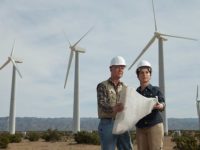Despite being led by a brainless, heartless, and gutless entourage, one may presume that Dorothy could have eventually stumbled her way to the Wizard of Oz’s doorstep with or without the assistance of the yellow brick road.
A parallel could be drawn regarding net-zero design in the architecture, engineering, and construction (AEC) industries. While even the most unprepared firms may potentially limp their way to net-zero design, the process could cetainly be simplified if they were given a map. Luckily, due to the dedicated work of a handful of industry professionals, such a guide now exists.
Advance Energy Design Guides
In 2002, a group of representatives from the American Institute of Architects (AIA), the U.S. Green Building Council (USGBC), the Illuminating Engineering Society of North America, and ASHRAE began questioning if and how they could exceed the parameters of ASHRAE 90.1, which was operating under the 1999 version at the time. After two years of work, the group introduced its Advanced Energy Design Guides (AEDGs). The documents, referenced as the 30% guides, demonstrated how engineers could design 30% above ASHRAE 90.1 in numerous applications.
From cover to cover, the guides offer readers a prescriptive path to energy-efficient design by climate zone and building type. Research was initiated via technical support documents courtesy of the U.S. Department of Energy (DOE) and/or various national labs. The group evaluated energy conservation measures by performing building energy simulations. Peer reviews were initiated at the 60% and 90% completion marks.
Between 2004 and 2009, the group published AEDGs for six different types of buildings, including small office, small retail, K-12 schools, warehouses, highway lodging, and small hospitals. More than 400,000 copies of those documents have been distributed.
In 2009, the committee changed its focus from 30% to 50%, releasing five 50% guides from 2009 to 2014.
During a committee meeting in 2016, the group began discussing bumping up its target efficiency benchmark to 70%.
“Since 2004, we’ve endured three newer versions of 90.1, with each version exceeding the previous version,” said Tom Phoenix, P.E., FASHRAE, ASHRAE presidential member, and chair of the AEDG steering committee. “Exceeding 70% of the 2015 version of ASHRAE 90.1 put us close enough to zero to give it a shot. So, we scrapped the 70% guide and elected to target net-zero energy.”
At the ASHRAE winter meeting this year, the group published its first net-zero guide, titled “Achieving Zero Energy Advanced Energy Design Guide for K-12 Schools.” The second guideline, “Advanced Energy Design Guide for Small to Medium Office Buildings,” was released in June. The committee hopes to release its third edition, a multifamily housing guide, in May of 2020. More than 669,000 30%, 50%, and net-zero guides have been downloaded over the last 15 years.
“These guides serve as solution sets and idea generators to get engineers started,” said Paul Torcellini, Ph.D., P.E., principal engineer, National Renewable Energy Laboratory, and chair of the “Advanced Energy Design Guide for Small to Medium Office Buildings” guide. “We constantly hear that zero-energy buildings are simply unachievable. We’re showing that by setting measurable goals and striving to achieve those goals, zero energy is a real possibility at a competitive dollar amount.”
Free to download
Guides such as these must cost thousands of dollars to access, right? Wrong. The entire library of AEDGs is available to download for free at www.ashrae.org/aedg. If the brainless, heartless, and gutless can bumble their way to the treasure at the end of the rainbow by simply following the yellow brick road, imagine what a highly qualified engineering firm such as yours could accomplish with such valuable information?
Register for our free webinars at http://webinars.esmagazine.com, where users can also view any webinar from the last year on demand in our archive. Here is a look at our most recent presentation available for on demand viewing.
July 27
Getting Started with VRF
Presented by Kevin Miskewicz, director, commercial product planning, and Victor Chael, commercial area manager, Mitsubishi Electric Trane HVAC US LLC
Aug. 11-15
2019 ACEEE Summer Study on Energy Efficiency in Industry
Portland, Oregon
https://aceee.org/conferences/2019/ss
Aug. 21-24
National Association of Women in Construction Annual Conference
Atlanta
http://www.nawic.org/nawic/Annual_Conference.asp
Sept. 29 to Oct. 2
MechanicalXchange
Park City, Utah





